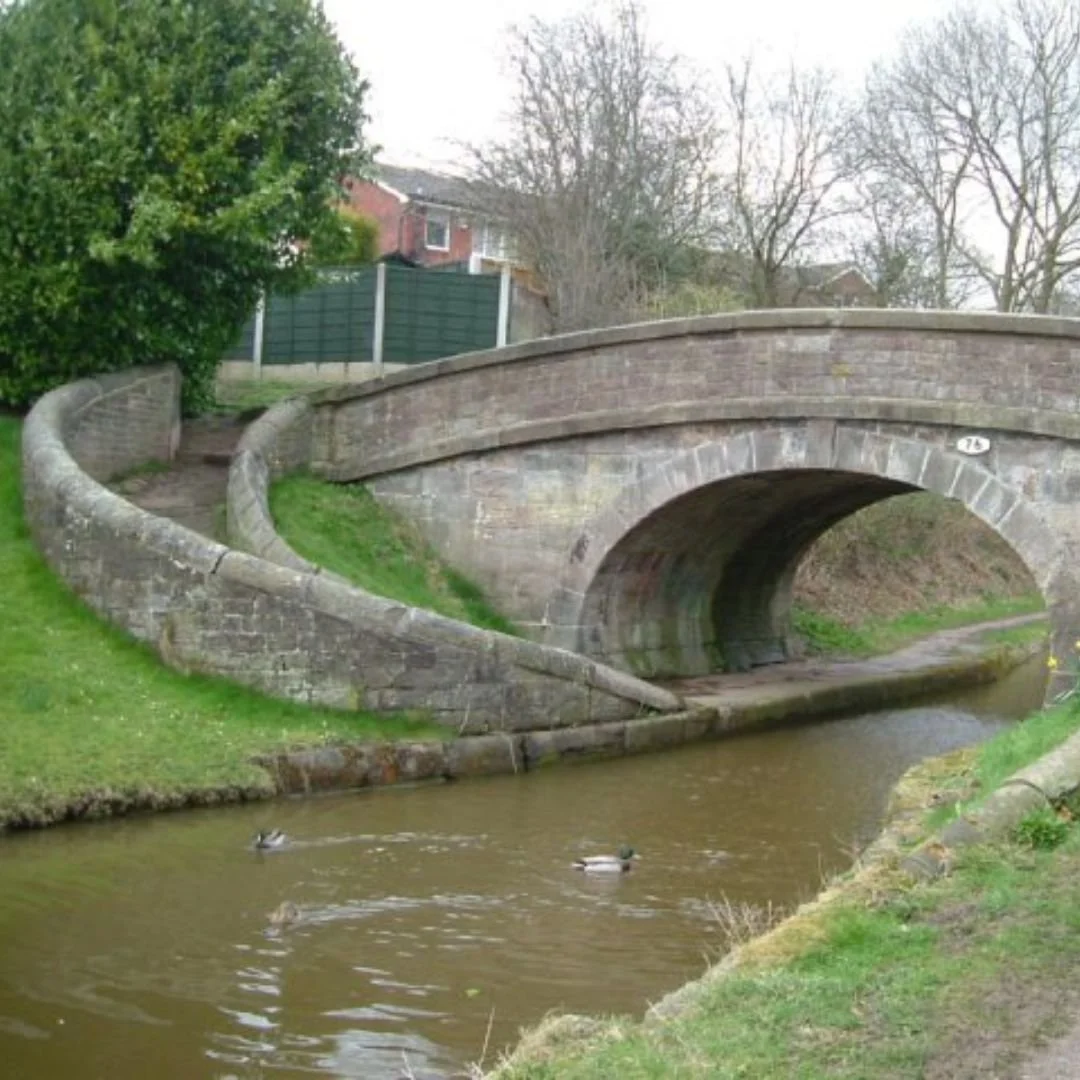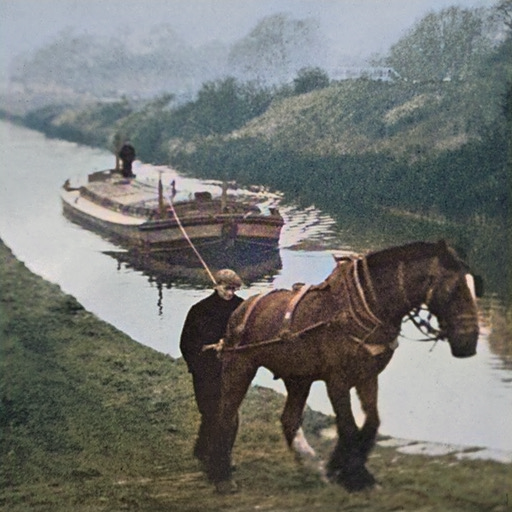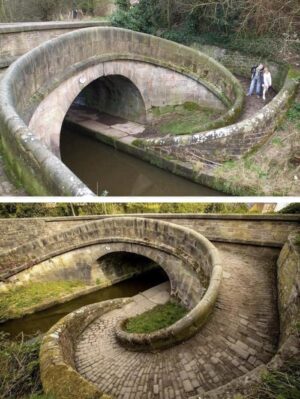The grade II listed ‘snake bridge’ was designed to allow horses to move over without having to untie it from the boat.
This smart piece of architecture can be found in Macclesfield.
The Macclesfield canal opened in 1831 and it features several snake bridges, or roving bridges, where the towpath goes from one side to the other in a loop.
A roving bridge, or snake bridge, is a bridge over a canal constructed to allow a horse towing a boat to cross the canal when the towpath changes sides.

This often involved unhitching the tow line, but on some canals they were constructed so that there was no need to do this by placing the two ramps on the same side of the bridge, which turned the horse through 360 degrees.
On the Macclesfield Canal, this was achieved by building spiral ramps, and on the Stratford-upon-Avon Canal, it was achieved by constructing roving bridges of iron in two cantilevered halves, leaving a slot in the middle for the tow rope.
This was also called a split bridge. For cost reasons, many ordinary Stratford bridges were also built in this way as they had no towpath.
The ramps of the bridge are typically studded with alternating rows of protruding bricks to prevent the feet of the horse from sliding.
The bridge may be constructed of cast iron (particularly in industrial areas) or of more conventional brick or stone.

The smooth stones minimised the risk of snagging or breaking the rope whilst this took place – it was quite an innovative piece of design.
For hundreds of years, horses were the backbone of British industry – they ploughed fields and pulled carts, carriages and charabancs all over the country.
A horse pulling a boat or barge wastes minimal energy through friction, and it is this efficiency calculation which led to the development of Britain’s canal system.

What is less well-known is that they also hauled narrowboats laden with freight.
The Romans are known to have used mules to haul boats on their waterways in the UK.
Boat horses were the prime movers of the industrial revolution, and they remained at work until the middle of the 20th century.
A horse, towing a boat with a rope from the towpath, could pull fifty times as much cargo as it could pull in a cart or wagon on roads.
In the early days of the Canal Age, from about 1740, all boats and barges were towed by horse, mule, hinny, pony or sometimes a pair of donkeys.

Many of the surviving buildings and structures had been designed with horse power in mind.
Horse-drawn boats were used well into the 1960s on UK canals for commercial transport, and are still used today by passenger trip boats and other pleasure traffic.
Even after the widespread introduction of steam and motor boats, horse-drawn craft continued to operate and compete with them until the middle of the twentieth century.
Horses are a critically important part of canal history, but a part that is in danger of being overlooked in this mechanical age.
It wasn’t so much the steam engine that created the industrial revolution as the horse that brought the coal to the boiler in the first place.

Horseboating, for all its apparent slow romantic grace, was not for the fainthearted.
It was very hard work requiring skilled judgement and experience interspersed with long hours of plodding drudgery and most of the boating population were pleased to move on to motor boats as they became available.
Engines didn’t get tired, and you didn’t have to walk behind them all day, every day…
Today, NB Maria is Britain’s oldest surviving wooden narrowboat, built in 1854 by Jinks Boatyard in Marple, and was never converted to have an engine.
From 1854 to 1897, Maria was led by a horse and used to carry railway track ballast for the Manchester, Sheffield and Lincolnshire Railway.

It was then used as a maintenance boat until 1962, lay abandoned for nine years until being salvaged in 1972 and converted to a passenger boat in 1978.
Maria is currently owned by Ashton Packet Boat Company.
It is sometimes loaned to the Horseboating Society and has taken part in several of their events, including British Waterways’ “Coal and Cotton” event.
The boatmen relied on tools such as forethought, ‘smacking whips’ and ‘strapping posts’.
Forethought: Horseboats do not have brakes and the act of stopping a boat loaded with cargo took a supreme effort.
This came from knowledge of the canals and experience of where boats were likely to meet with obstacles such as lock gates or boats coming the opposite way.

Smacking whips: As barbaric as the name sounds, smacking whips were not used to punish the horse, but to create a loud ‘smacking’ noise, like a gunshot, to warn of the boat’s approach.
Strapping posts: These were commonly made of wood or iron and set in the ground close enough to the canal for the boatman to wrap the ‘strap’ around them.
The ‘strap’ was simply a strong piece of rope attached to the boat, which, after being wound around the post, would slow the boat down or, at junctions or sharp bends, allow it to change direction.
If you enjoyed this blog post, please follow
